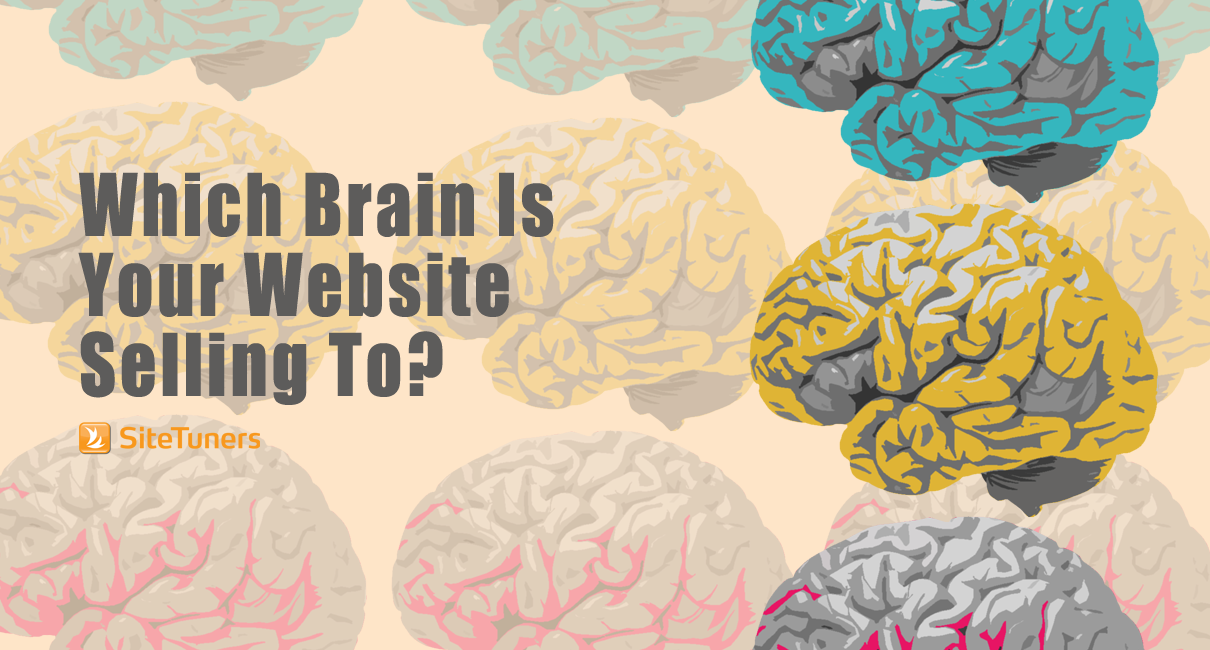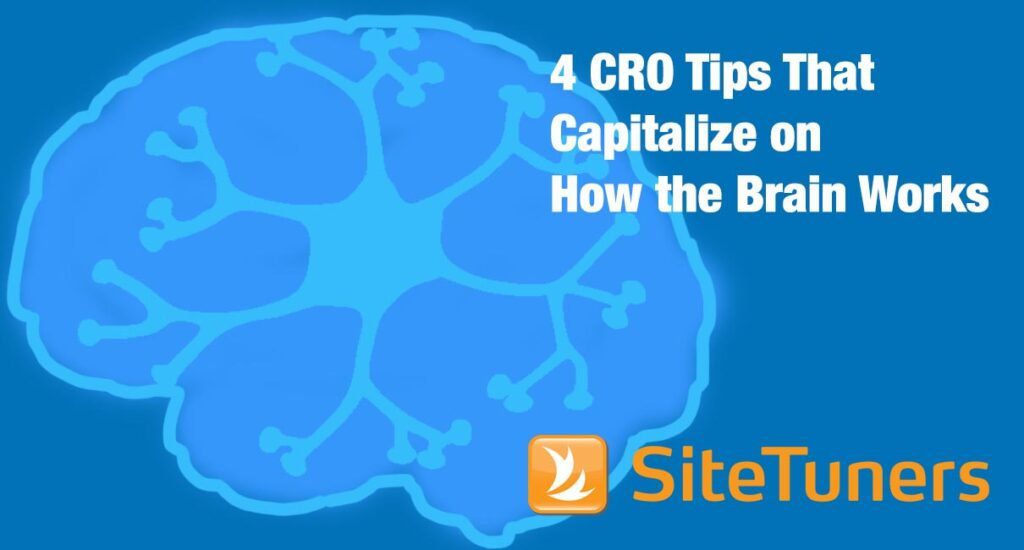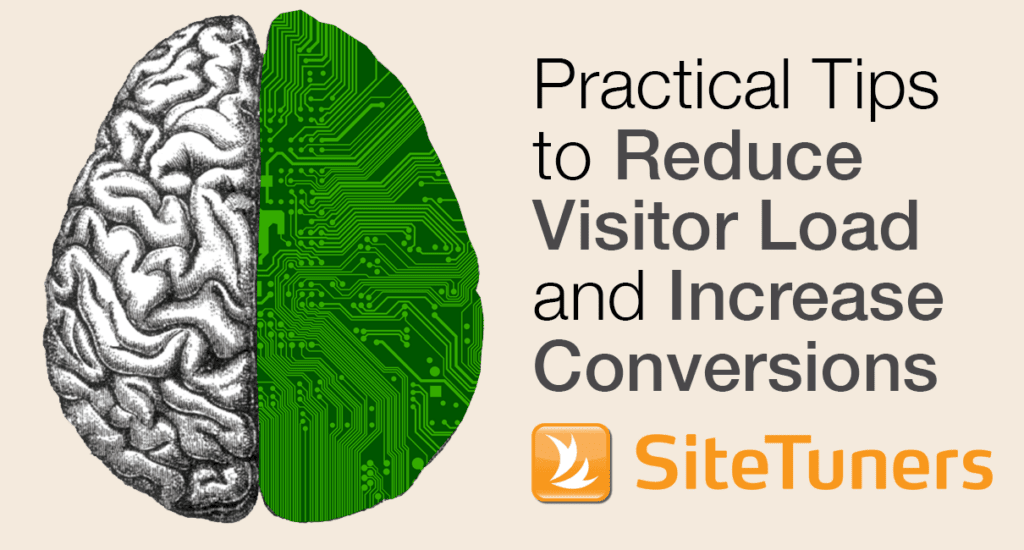Most people would like to believe that they make decisions based on the careful, deliberate processing of information. But the truth is, for all its complexity, the human brain seems to have a distinct pecking order: when opportunity knocks, it’s the old “reptilian” brain that calls the shots, while “logic” and “emotion” barely get a vote.
Think about this in the context of your website. Assuming you are trying to get visitors to make some sort of decision on your site (sign up, buy, download, etc.), you have to understand that there’s a huge disconnect between how the human brain takes in and processes data, and how most websites are organized. To create a truly effective landing page, you need to know how the human brain operates. When it comes to making a purchase, the real decision maker is the reptilian brain, and you’ll be hard pressed to ever trigger a buying decision if you don’t deliver your message in a way that the reptilian brain understands.
Your Brain, Times Three
Back in the 1960s, a neuroscientist named Paul MacLean developed a model of the brain based on its evolutionary development. His model identified three distinct layers in the brain – the reptilian brain, the limbic system, and the neocortex – each of which evolved to help solve adaptive challenges. Although each layer dominates separate brain functions, the three layers also interact in significant ways. MacLean said that the three brains operate like “three interconnected biological computers, [each] with its own special intelligence, its own subjectivity, its own sense of time and space and its own memory.”
The Reptilian Brain
The first to evolve was the reptilian brain, so-named because it represents the high point of development among lizards, snakes, and other reptiles. The reptilian brain’s primary concern is physical survival and well-being. It is self-centered, assesses situations in black-and-white terms, and is quick to act, triggering the fight-or-flight response most people are familiar with. The reptilian brain seeks visual familiarity, is strongly triggered by emotions, and until the other layers developed, really couldn’t be bothered with complex reasoning. Despite its aversion to details, its specialty is making decisions.
The Limbic System
The second brain to evolve was the limbic system (also called the mid-brain). The limbic system is the seat of emotion, attention, and affective (emotion-charged) memories. The limbic system makes value judgments, deciding whether you like something or are repelled by it. Because of this, it tends to dominate behaviors that involve the avoidance of pain and the repetition of pleasurable activities. It also determines the amount of attention that you give to something, and is largely responsible for spontaneous and creative behavior.
Because it links emotions and behavior, the limbic system often inhibits or overrides the reptilian brain’s habitual and unchanging responses. Similarly, the more complex emotions of bonding, attachment, and protective loving feelings connect it to the neocortex. According to MacLean, the limbic system decides how it feels about something, and the neocortex is reduced to simply rationalizing that value judgment decision.
The Neocortex
The most recent brain to evolve is the neocortex (also called the cerebrum, cerebral cortex, or rational brain). It is composed of the two large hemispheres and exists only in primates.
The neocortex contains specialized areas for controlling voluntary movement and processing sensory information. The left hemisphere is more linear, verbal, and rational, while the right hemisphere is more spatial, artistic, musical, and abstract. Higher cognitive functions are all centered in this brain (including language, speech, and writing). The neocortex supports logical thinking and allows you to see ahead and plan for the future.
Being sophisticated, developed creatures, most humans are convinced that this “thinking” brain is where we make our decisions. But as it turns out, how people “think” they will react is hardly ever consistent with how they “really” react. Have you ever made product changes based on the results of a survey or focus group, just to find that your intended improvements actually hurt sales? It’s not that people lied; it’s just that their neocortex didn’t have a clue about what their reptilian brain wanted.
Designing for Three Brains
If a pecking order of sorts does exist in the brain, it seems logical to assume that the neocortex, being the most recent to evolve, would dominate the lower levels. But this is not necessarily true. The limbic system often asserts its influence over higher mental functions, and the instinctual reptilian brain can exert a powerful influence over both emotion and logic. In fact, if there’s one thing you can be sure of: in a three-way battle of the brains, the reptilian will always win.
So what does this mean for websites and landing pages seeking to sell a product or service? Here are some key takeaways:
-
- Your customers don’t care about all the intellectual reasons why they should buy from you. The reptilian brain is driven by emotions, and the more senses you can trigger and associate with your product or service, the more effective you’ll be in influencing your visitors’ buying behavior.
-
- People react more strongly to the fear of loss than the potential for gain. Understand your customers’ pain points and help them envision life without that pain.
-
- The reptilian brain responds rapidly to visual cues. First impressions are always based on appearances, not information, and in the buying process, words are secondary to visual cues.
-
- When people read words, their reptilian brain tries to turn the words into a picture. Read your web copy. Now try to picture what things like “revolutionary innovation” or “best-in-class” look like. You can’t. Neither can your visitors.
-
- Fear of the unknown is powerful. Your visitors will avoid uncertainty. If your buttons, navigation, and overall purchase process are not crystal clear, chances are your visitors will leave and find someplace safer and more predictable.
Marketers can learn a lot from the field of neuroscience, and this post barely scratches the surface when it comes to understanding what makes people buy online. But even these basic tips can help you make huge improvements in how you communicate – and sell – through your website. Take a look at your key landing pages. Are you selling to the intellectual neocortex with detailed explanations about the value of your product or service? You might as well be speaking in tongues. Your customers are not as rational as they think. Appeal to their reptilian brain and your message will sail right past the mental gatekeeper, directly to the seat of the real decision maker.
This article originally appeared in Tim’s ClickZ column November 1, 2011
Take your conversions to the next level.Learn how our experts at SiteTuners can help kickstart your conversion rate optimization process or get better results from your CRO efforts. Give us 30 minutes, and we’ll show you a roadmap to your digital growth! |



